
Surabaya is the capital city of East Java province and the second-largest city in Indonesia, after Jakarta. Located on the northeastern corner of Java island, on the Madura Strait, it is one of the earliest port cities in Southeast Asia. According to the National Development Planning Agency, Surabaya is one of the four main central cities of Indonesia, alongside Jakarta, Medan, and Makassar. The city had a population of 2,874,314 within its city limits at the 2020 census. With 3,009,286 people living in the city as of mid 2023 and over 10 million in the extended Surabaya metropolitan area, according to the latest official estimate, Surabaya was the second-largest metropolitan area in Indonesia. Surabaya metropolitan is also ASEAN's 6th largest economy ahead of Hanoi. In 2023, the city's GRP PPP was estimated at US$150.294 billion.
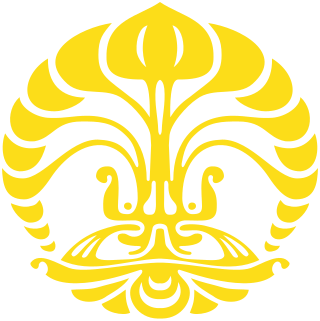
Universitas Indonesia is a public university in Depok, West Java and Salemba, Jakarta, Indonesia. It is one of the oldest tertiary-level educational institutions in Indonesia, and is generally considered one of the most prestigious universities in Indonesia, along with the Gadjah Mada University and Bandung Institute of Technology. In the 2024 QS World Universities Ranking, UI is ranked 1st in Indonesia, 49th in Asia and 237th in the world.

AirlanggaUniversity is the second-oldest university in Indonesia and also a public university located in Surabaya, East Java. Despite being officially established by Indonesian Government Regulation in 1954, Universitas Airlangga was first founded in 1948 as a distant branch of the University of Indonesia, with roots dating back to 1913. It started with a medical school and a school of dentistry. Now Universitas Airlangga hosts 16 faculties with more than 35,000 students and 1,570 faculty members. Universitas Airlangga has university hospitals for the faculties of Medicine, Veterinary Medicine, Nursing, and Dentistry, as well as a tropical infection hospital for its Institute of Tropical Disease. The university is also equipped with biosafety level three facilities.
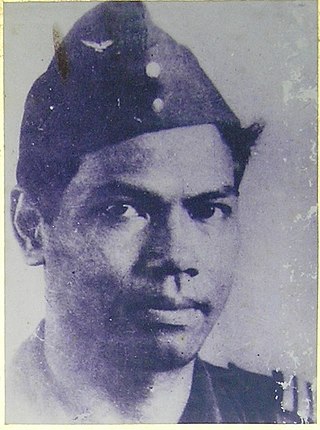
Abdulrahman Saleh was an Indonesian physician and aviator whose plane was shot down by the Dutch during the Indonesian National Revolution. He was also a co-founder of Radio Republik Indonesia. He was posthumously declared a National Hero of Indonesia in 1974.

Ernest François Eugène Douwes Dekker also known as Setyabudi or Setiabudi was an Indonesian-Dutch nationalist and politician of Indo descent. He was related to the famous Dutch anti-colonialism writer Multatuli, whose real name was Eduard Douwes Dekker. In his youth, he fought in the Second Boer War in South Africa on the Boer side. His thoughts were highly influential in the early years of the Indonesian freedom movement.
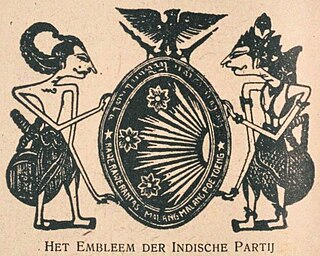
The Indische Partij (IP) or Indies Party was a short-lived but influential political organisation founded in 1912 by the Indo-European (Eurasian) journalist E.F.E. Douwes Dekker and the Javanese physicians Tjipto Mangoenkoesoemo and Soewardi Soerjaningrat. As one of the first political organisations pioneering Indonesian nationalism in the colonial Dutch East Indies it inspired several later organisations such as the Nationaal Indische Party (N.I.P.) or Sarekat Hindia in 1919 and Indo Europeesch Verbond (I.E.V.) in 1919. Its direct successor was Insulinde.

Huwen op Bevel is a 1931 romance film from the Dutch East Indies. Directed by George Krugers and thought to have been produced by Tan's Film, it follows two young lovers who are nearly separated but can ultimately be together. A critical flop, it was Krugers's last as a director. It is likely lost.

Suharso, (1912–1971) also spelled Soeharso, was an Indonesian medical doctor known for his work with disabled people and in the rehabilitation of people injured during the Indonesian National Revolution. He was declared to be a National Hero of Indonesia in 1973.
Wahidin Soedirohoesodo (1852–1917) was a medical doctor and education reformer in the Dutch East Indies who co-founded the Javanese self-improvement society Budi Utomo. Therefore, he is sometimes considered an early figure in the Indonesian National Awakening. In 1973 he was declared a National Hero of Indonesia.
Most railway lines in Indonesia were constructed during the Dutch colonial rule. After independence in 1945, many lines were abandoned. The current national rail operator, PT Kereta Api Indonesia (Persero), was founded on 28 September 1945.
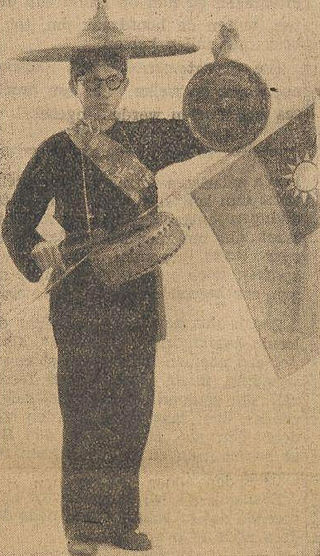
Louis Victor Wijnhamer, better known as Pah Wongso, was an Indo social worker popular within the ethnic Chinese community of the Dutch East Indies, and subsequently Indonesia. Educated in Semarang and Surabaya, Pah Wongso began his social work in the early 1930s, using traditional arts such as wayang golek to promote such causes as monogamy and abstinence. By 1938, he had established a school for the poor, and was raising money for the Red Cross to send aid to China.

N.V. Nederlandsch-Indische Spoorweg Maatschappij, abbreviated to NIS, NISM or N.V. NISM was a private-owned railways company in charge of rail transport in Java, Dutch East Indies. The company's headquarters were in Semarang, Central Java. The company started its maiden route from Semarang to the Vorstenlanden and in 1873 they also built their line to the Willem I Railway Station of Ambarawa–Kedungjati and Batavia–Buitenzorg lines. Later the network expanded to Bandung and Surabaya. It was absorbed into the present Kereta Api Indonesia after Indonesian independence in 1949. It was the main competitor to Staatsspoorwegen as state-owned railway company and established on April 6, 1875.

Indies Empire style is an architectural style that flourished in the colonial Dutch East Indies between the middle of the 18th century and the end of the 19th century. The style is an imitation of the neoclassical Empire Style which was popular in mid-19th-century France. Conformed to the tropical setting of Indonesia, the style became known in the Dutch East Indies as the Indies Empire style.
The following is a timeline of the history of the city of Surabaya, Indonesia.
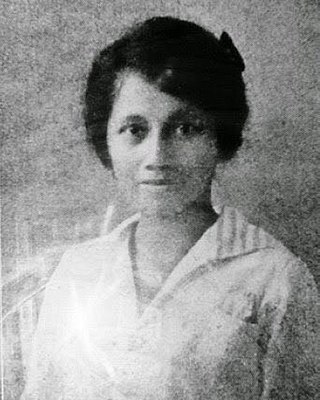
Maria Emilia Thomas, or better known as Marie Thomas, was the first Indonesian woman to become a physician. She received her diploma from the School of Training of Native Physicians in 1922. She went on to specialize in obstetrics and gynaecology and is considered the first Indonesian doctor to specialize in this field. She also established a midwifery school in Bukittinggi.
Anna Adeline Warouw Karamoy was the second Indonesian woman to become a physician. She received her diploma from the School of Training of Native Doctors in 1924 and went on to specialize in otorhinolaryngology.

Paul Alex Blaauw, usually known as P. A. Blaauw, was an Indo politician, lawyer, and member of the Dutch East Indies Volksraad representing the Indo Europeesch Verbond from the 1920s to the 1940s. During the period of transition to Indonesian independence and the 1949 Dutch–Indonesian Round Table Conference he was a leader of the largest faction advocating for the rights of Indos.
Abdul Rasjid Siregar gelar Mangaradja Mahkota Soeangkoepon, commonly known as Dr. Abdul Rasjid, was a politician and physician in the Dutch East Indies. He was elected or appointed to the Volksraad from 1931 to 1942, during which time he sat with the Indonesian nationalist faction. During the 1930s, he became convinced that public health and cooperation with traditional healers should be central to the mission of physicians in the Indies.
Satrio Sastrodiredjo was an Indonesian physician and politician of the Indonesian Communist Party. He served as the Vice Governor of East Java between 1963 and 1965, and previously as the mayor of Surabaya between 1958 and 1963. His political career was cut short after the 30 September movement and he was imprisoned.
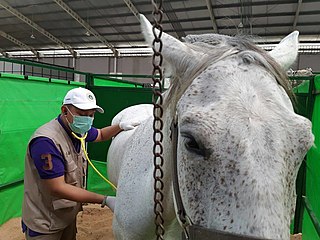
In Indonesia, veterinary medicine has been practiced for hundreds of years. Veterinary services and education were pioneered during the Dutch colonial era. As of 2023, there are 12 universities that offer veterinary education. The professional organization for veterinarians is the Indonesian Veterinary Medical Association (PDHI).














